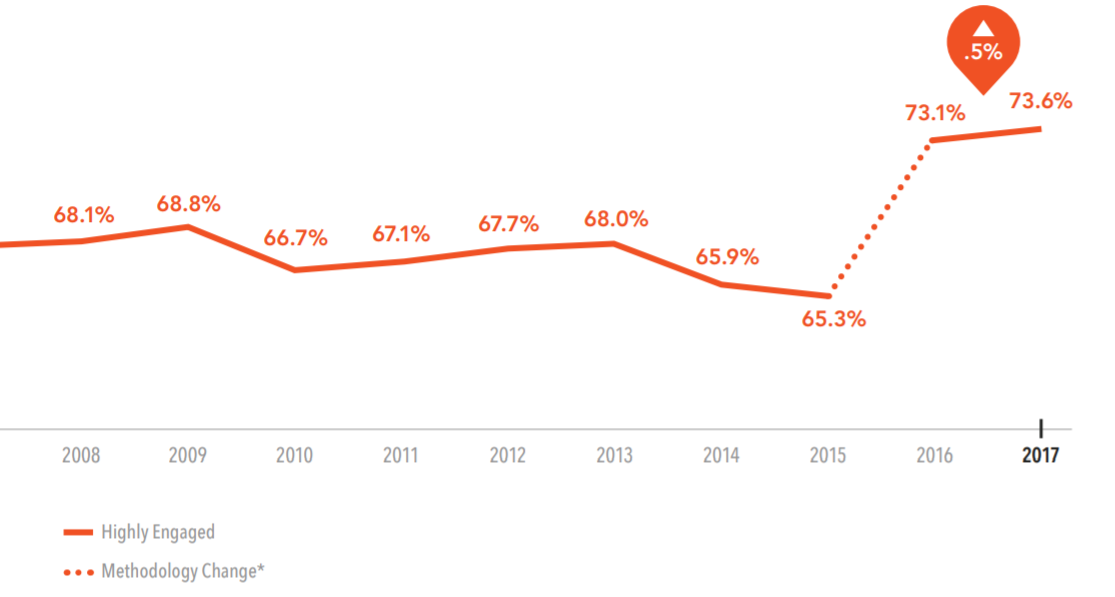
Top Employee Engagement Trends for 2018
These Top Employee Engagement Trends for 2018 are based on the employee engagement surveys from nearly 50 Best Places to Work contests, this comprehensive report is the one and only of its kind, examining employee engagement and culture trends at America’s top workplaces. This year’s study aggregates responses from more than 600,000 employees from 8,000+ organizations across America.
The Top Employee Engagement Trends for 2018
Similar to what we find when we assess organizational culture, the top trends highlight where investments should be made.
— I believe this organization will be successful in the future
— Everyone here is treated fairly regardless their differences
— I am proud to work here
— The people I work with most closely are committed to producing top quality work
— My immediate manager cares about me as a person
— When the organization makes changes, I understand why
— I am paid fairly
— I see professional growth and career development opportunities for myself in this organization
— If I contribute to the organization’s success, I know I will be recognized
— It would take a lot to get me to leave this organization (note: this item also was one of the only items to decline in favorability year-over-year)
— My job allows me to utilize my strengths
— I trust the senior leadership team to lead the company to future success
— I believe this organization will be successful in the future
— The leaders of the organization value people as their most important resource
— If I contribute to the organization’s success, I know I will be recognized
Unfortunately, 2017 didn’t recoup 2016’s loss. Low favorability on this item has been found to be a top predictor of employee turnover.
However, when coupled with whether employees have visibility to growth opportunities, we see an average 10 percent gap in favorability over the past eight years. That gap has gradually widened from 9 percent in 2013 to 12 percent in 2017. This represents the gap between managers’ intent and their ability to deliver.
The survey item, “I see professional growth and career development opportunities for myself in this organization,” is consistently a top driver of engagement. Unfortunately, it’s also consistently been among the bottom in favorability. Empowering managers to close this gap could greatly impact engagement.
The Bottom Line
How you engage employees matters. If you take care of your employees, they will take care of your business. Because each company has a unique strategy and workplace culture, we recommend you take a look at these top employee engagement trends for 2018 and determine how they impact your current talent management strategies.
To learn more about how to use these top employee engagement trends for 2018, download The 10 Most Powerful Ways to Boost Employee Engagement
Explore real world results for clients like you striving to create higher performance